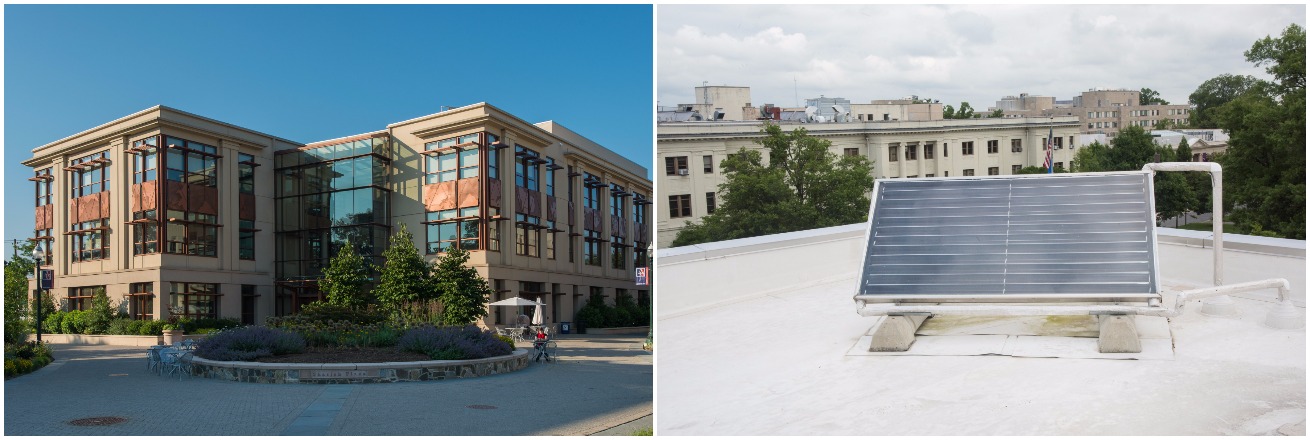The underground parking garage uses 100 percent
high efficiency LED lighting.SIS uses 30% less water than the average building by utilizing low flow, ENERGY STAR faucets and fixtures, dual-flush toilets, and waterless urinals.
The building's floorplan takes advantage of natural light. The use of fixed solar shades on the building's exterior allow daylight to enter the building while minimizing the heat gain from the sun and reducing the energy needed for lighting and cooling.
Rooftop solar hot water heating systems heats the water used in the restrooms and coffee shop. Photovoltaic solar panels cover 3,230 square feet of the roof, providing 20% of the electricity used in SIS.
More than 20% of the materials used were made of recycled products and 75% of the waste produced was diverted from landfill.
Improved indoor environmental quality reduces occupants' stress and increases productivity by providing comfortable spaces. The day lit multi-level atrium encourages gathering and discussion. Classrooms have abundant windows and are equipped with adjustable shades for easy control over brightness and glare.

